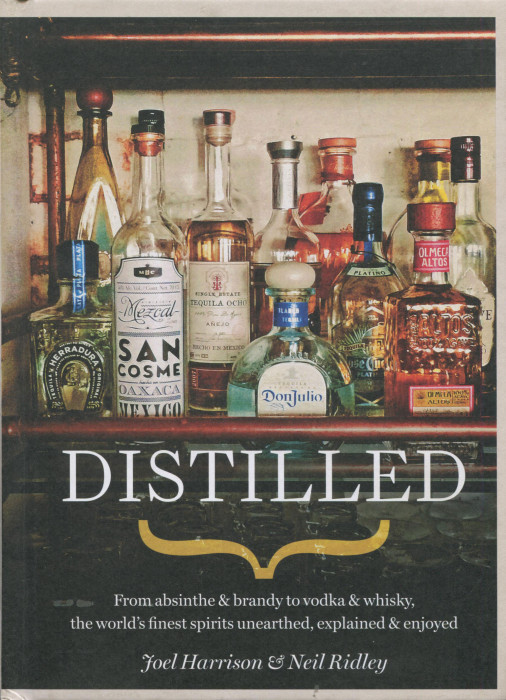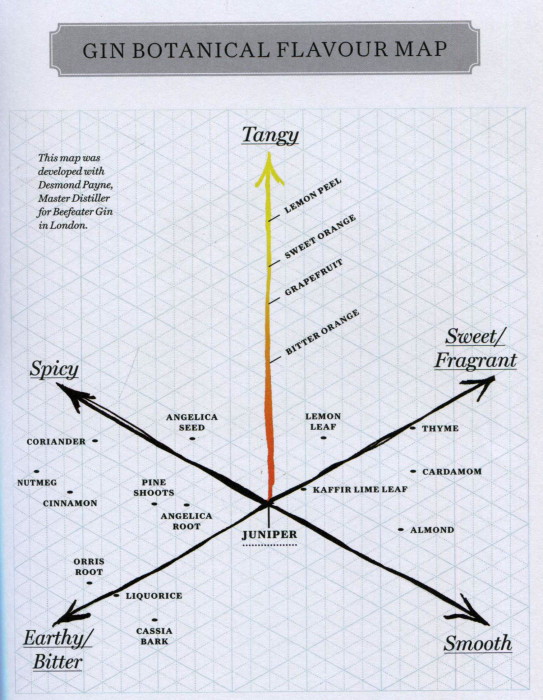Suzen and I have an arrangement in our marriage. That often occurs. It is the nature of things, as a Roman or Greek philosopher would say.
Not that kind of arrangement. She does the savory and bread books. I do desserts and cocktails. I think my cookbook collecting is harder because there is no greater contrast than baking and mixology. When you bake, you follow the formula or there will be disaster. When you mix, you can pour at will with whatever bottles are before you. Mixology is stress-free fun. It’s tough to make a mistake.
It is, of course, possible to make something you’ll never try again.
That’s why I collect mixology books. Because there is no fixed “science” here, because everything is wide open, you can find many perspectives on what and how to combine. And the many authors scribing books on booze often come up with very interesting perspectives or unearth some history or even science that we will all find refreshing.
Distilled is a wonderful new book explaining the background and use of the key spirits we all see on the bar shelves. Here, authors Joel Harrison and Neil Ridley encourage us to try those bottles of “stuff” we’ve only been looking at. Joel and Neil write the award winning website Caskstrength.net, are noted journalists, and serve as judges at beverage contents. They know, truly know, the world of spirits.
There are books covering spirits that deal with hundreds of varieties, books that are oversized and overweight. They are hard books to lug around, to be truthful, and can be intellectually intimidating. So much information, so little time to absorb it, use it.
Distilled is different. Distilled covers eight primary spirits plus a cluster of key ones like aquavit and soju. The book is compact at less than three hundred pages and small in size and weight. You don’t lug this book. You just carry this around. To the beach, on the train, or in your bed as you sip that last whisky of the day.
You’ll find chapters devoted to gin, vodka, tequila, absinthe, rum, whisky, and both French and world brandies. The book is composed of words, photos and very importantly graphics. Each chapter has a beginning graphic or legend that summarizes the spirit: name, country of origin, color, main countries of production, biggest selling brands, and key ingredients. Then comes the history, science and the details including recipes.
For example, London gin was always made, had to be made, in London. Now we know that, if you use the right botanicals, you can make London gin anywhere. If you change up the botanicals, say use cucumber and rose petal, you get something like Hedrick’s, a proud new gin product of Scotland — which does happen to be the motherland of whisky as Distilled carefully explains.
The combination of botanicals varies with each gin line and those combinations are secrets are tightly, lovingly held. Here’s a graphic from the book, prepared with the help of Desmond Payne, the master distiller for Beefeater Gin in London. This is his attempt to show how different botanicals might factor into the flavor profile of a gin. As you can imagine, there are an infinite number of combinations that can be sampled, savored and which, in some cases, may succeed commercially.
This gin chapter includes rather detailed instructions for crafting the perfect gin martini. Yes, this “perfect” recipe calls for vermouth, but only to wash out the glass and leave just traces of vermouth for the gin to follow. Now, that demurring of vermouth, with no measurement and the quick discarding, may seem heresy to you. That’s why I collect mixology books. There may not be exact right or wrong, but there is a cocktail world of conversation if not argument. Boisterous, but not angry. Just, shall we say, spirited.
Distilled is a lively, swift read. I find the combination of words and pictures and those graphics make it far easier for me to understand the nature of each bottle. I’ve started reading Distilled, beginning with that gin chapter. I’m reading it one chapter, one bottle, at a time. It’s the perfect summer book to sip on.


